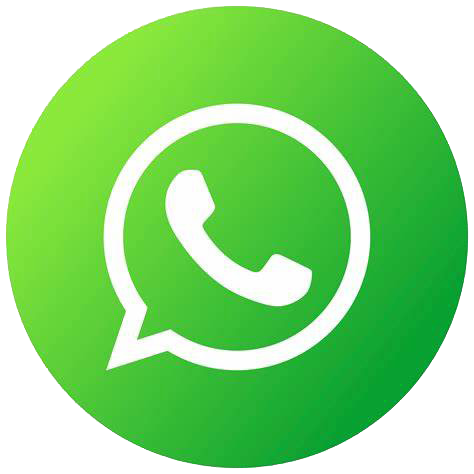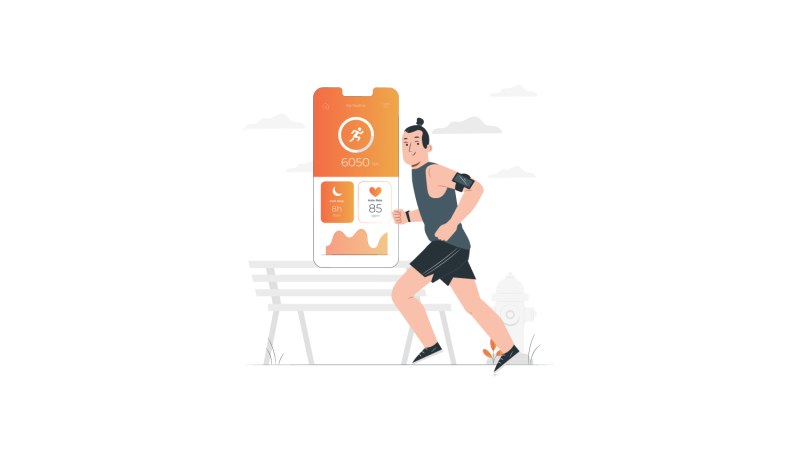Health and wellness are becoming increasingly popular. Many people are becoming more aware of the health risks associated with obesity and sitting at a desk all day. Having a healthy body means that you're beautiful, rich, and fit.
Many people all over the world do sports because they have health problems. There are a lot of people making fitness apps these days.
Since then, the growth of health and fitness apps has characterised various techniques, ranging from cultivating healthy meals to weight reduction activities that can be completed with a single swipe on their cellphones.
Learn how to create a fitness app in this guide. We have built many apps like this, and we can tell you about all the new things in this field.
Why Would You Create A Fitness App?
Before getting into the benefits of fitness applications, let's look at the industry's history. It seemed like a great idea that Google had its Google Health service during the first few years. If it were introduced today, it would probably be popular, but back in 2011, the firm had to terminate the project due to its lack of appeal.
There are going to be a lot of fitness apps in the future, according to a report from MarketWatch in January 2019. The Fitness segment made $17,963 million in 2020. A CAGR of 23% is predicted throughout the forecast period.
More and more health and fitness features are being added to fitness apps, which means that the market for these apps will keep growing and growing. Profits will grow at a 5% rate from 2019 to 2023. By 2023, there will be an industry worth $20,499 million in sales.
Using stats from Statista, 593 million people worldwide downloaded health and fitness applications in the first quarter of this year. In the same quarter of last year, just 446 million people downloaded health and fitness apps. By the end of 2022, health and fitness applications are predicted to have 656 million downloads.
The global coronavirus epidemic, which has caused people to stay at home and rearrange their workout routine and general lifestyle practices, is mostly to blame for this increase.
Types of Fitness Apps
As a general rule, there are three types of fitness apps:
- Workout and exercise apps
- Nutrition apps
- Activity tracking apps
There are a lot of different types. Only a small percentage of software programs are a mix between two and all three of these types. Let's have a look at each of them.
Workout and Exercise Apps
Using workout apps, people can track how far they've come and learn how to do exercises correctly.
Our list of workout apps is the most wide-ranging one we have. Its main goal is to show people what exercises they should do and how to do them. These people are all about working out, just like the name says.
There are countless instances of training applications, and each one has its distinct features. If you look at all workout apps, you can divide them into various groups:
- Personal trainer apps
- Logbook apps
- Workout fitness apps that pair with devices
- Nutrition apps
- Activity tracking apps
Personal Trainer Apps
If you want to learn how to do exercises and make a personal training plan, apps like these are top-rated because they can do both.
There are a lot of apps like 6 Week Training and FitnessBuilder Plus that people like to use.
People want to be able to work out in a place that can be customised for them. There is no need for users to choose a difficulty level or a set of exercises they like.
Many people also think it's a good idea to show how to do the exercises. It's not safe to do exercises if they cause pain or don't have the right effect. With these apps, people don't have to pay for a gym anymore because they can learn how to do each exercise from 3D models, videos, or detailed descriptions on their phones.
Logbook Apps
In a logbook app, you can record your workouts and make a training plan for yourself to keep track of your progress. The app is simple but valuable. It can record your progress and show it in graphs and stats.
Logbook apps are like a to-do list. They store information about how many times you worked out. Users can choose from a lot of different workouts and exercise libraries. Examples of well-known logbook apps include HeavySet and Strong and Fitbod and Stacked.
Workout Fitness Apps that Pair with Devices
Fitness apps and wearables are already a common way to work together.
A workout app is better than a fitness band for people who can't work out without one. The smartphone's display provides instantaneous access to wearable gadget data.
The admin panel and intelligent sports equipment sync capabilities are two additional features of these apps.
Nutrition Apps
Nutrition apps help you keep track of calories and find good recipes. They also help you find healthy recipes.
These apps help people track how many calories they eat, how many calories they burn, and how much water they drink. They also encourage healthy eating habits. The amount of coffee they consume and the percentage of body fat they carry can be monitored with these apps' assistance.
These apps' primary goal is to help you set personal goals. The app will help people make grocery lists and even find recipes for healthy foods.
These apps are some of the best of their kind. They include HealthyOut, MyPlate Calories Tracker, and the Calorie Counter and Food Diary.
Activity Tracking Apps
Apps that track your activity are often used with wearables.
Apps that track your activity are good even if you never go to the gym or aren't into sports, but you still want to make sure that you're moving a lot. Such apps can keep track of how many steps you take and how many calories you eat. Geolocation helps them track where they are and how far they have walked.
Another interesting feature is how well people sleep and how innovative alarm clocks wake them up in the REM sleep stage. This makes it easier for people to get out of bed and get ready in the morning.
Many apps that track your activity can be used with wearables, but you can still get information from your smartphone if you don't have one.
Fitness App Development: Key Features
1. Creating Accounts
Accounts are significant because they let people store information and keep their data even if they change their computers or phones.
2. Integrating with Other Services
Facebook, Twitter, and other social networks are the most convenient ways to sign up for an app account. Social logins allow users to view all of their friends who are also using the program, and they can immediately begin sharing their progress on social media.
3. Adding Personal Info
Having the option to enter personal information is vital since your app's diet, or training regimens must be customised to each user's age and physical characteristics such as weight, height, and other physical features.
4. Configuring Notifications
Notifications are essential when it comes to being motivated! Many people have a hard time with sports because they lose their excitement at the start of the game.
5. Setting Targets
All fitness apps must let people set goals for themselves. People who use Crossfit apps need to set goals for their workouts, and people who use activity tracking apps need to set goals for how many steps they take or how many hours they sleep.
6. Gamification
Use: Gamification can be used for both fun and to motivate people. It's good to get things like that in video games, but it's even better when you compete against other people.
7. Integration with Wearable Devices
To enable wearables, your software must be capable of connecting to the most significant number of available trackers.
8. Food Logging
If you want to make a diet app, you need to track what you eat.
Cost of Fitness App Development
It's hard to say how much money you'll spend making a fitness app, but you can get a rough idea. App prices will depend on the features you want, how long it takes to make the app, and how much the development team charges.
There are several stages to the development process, and each part will account for a certain percentage of the total projected development cost.
In some cases, the design can account for up to half of the total development cost, depending on the project's scope and features. To stand out from the rest of the crowd, you can make these figures look unique and complex with animation. Because it's so hard to figure out how long it will take to build something, design is the most challenging part of figuring out how much it will cost.
Also, the number of people on the team and how the project is being done affect how long it will take to finish. A lot of time can also be spent on communication. If the requirements aren't obvious, this can take time.
Choose a way to make money with your fitness app
Of course, you need to make sure that the fitness software you're developing can help you achieve your goals. You can make money from your app in many ways. You should put these things in your fitness app to make money or profit:
- This is the first thing people have to do before using your fitness app. They have to pay for it. One way to get people to try your app for free is to give them a free trial. If they know how valuable your app is, there's a good chance they'll pay for it or sign up to keep using it.
- Creating a free fitness app for customers doesn't mean you can't generate money by enticing them to pay for an advanced feature or premium content.
- You can offer a cost-per-mile commission to other fitness companies interested in working with you and conducting advertising campaigns within your app.
- Here's a free-to-try model: A business concept known as "premium subscription.” Your customers can use your app's free features, but you can charge for others. While essential functions are complementary, fitness regimens and personal coaching are not.
Conclusion
Remember these things when you make a fitness app:
- To keep people coming back to your fitness app, ensure it has the best features.
- Workout apps need to be able to change how exercises are done, how they are done, and what tips and techniques they give you.
- Make wearable fitness devices work with each other and work with their manufacturers to get better results and save money.
A fitness app might be challenging to design, just like any other app. It is, however, still vital and effective to make sure that the fitness app you choose has the best features that will be useful to users in the long run. To do so, ensure that you can personalise training regimens to meet the individual demands of your clients.
You'll have a better chance of making your fitness app stand out and flourish if you genuinely desire to help your customers achieve their fitness objectives through the numerous features. Moreover, if you a keen to make your idea a success, you might want to think about outsourcing your app development.
Author Byline:
Nishanth is a Startup Specialist | SEO enthusiast, working at NeoITO - a reliable Software Development Company based in the USA. He is an avid reader, writer, and works closely with entrepreneurs to stay updated on the latest.


